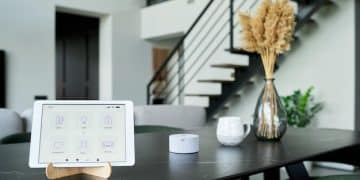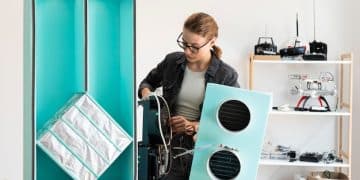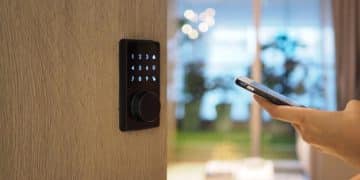Smart Home Air Purifiers: Breathe Easier with Connected Tech
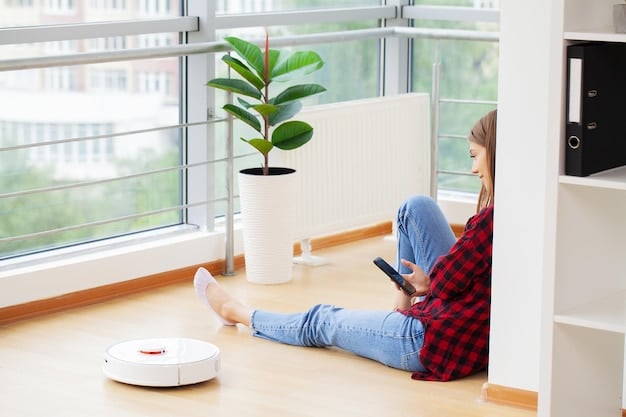
Smart home air purifiers utilize connected technology to monitor and improve indoor air quality, offering features like remote control, real-time monitoring, and automated adjustments for a healthier living environment.
Are you concerned about the air quality in your home? Smart home air purifiers offer a technologically advanced solution, going beyond traditional air purification to provide connected features and enhanced control over your indoor environment. Let’s explore how these devices can improve your well-being.
Understanding Smart Home Air Purifiers
Smart home air purifiers represent a significant advancement in air purification technology. These devices combine the functionality of traditional air purifiers with the convenience and intelligence of smart home connectivity.
By connecting to your home’s Wi-Fi network, these purifiers offer a range of features that are simply not possible with older models.
Key Features and Benefits
What makes smart home air purifiers stand out from their traditional counterparts? Here are some of the key features and benefits:
- Remote Control: Adjust settings and monitor air quality from anywhere using a smartphone app.
- Real-time Monitoring: Track pollutants and air quality metrics in real-time.
- Automated Adjustments: Set the purifier to automatically adjust its settings based on air quality.
- Voice Control: Integrate with voice assistants like Alexa or Google Assistant for hands-free control.
These features combine to provide a user experience that is both convenient and effective, leading to better air quality and a healthier home environment.
In summary, Smart home air purifiers provide an added layer to traditional air purifiers. They are much more convenient and practical than older models.
The Technology Behind Smart Air Purification
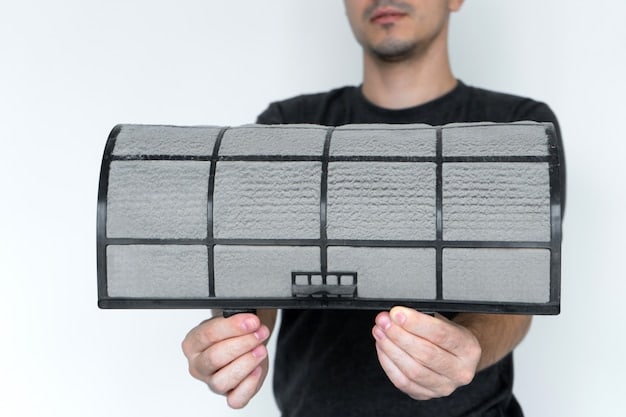
The effectiveness of smart home air purifiers lies in the technology they employ. These devices use a combination of filtration systems, sensors, and smart connectivity to deliver superior air purification.
Let’s take a closer look at the core technological components and how they work together.
Filtration Systems
Most smart home air purifiers utilize a multi-stage filtration system to capture a wide range of pollutants. Common filter types include:
- Pre-filters: Capture larger particles like dust and pet dander.
- HEPA Filters: Remove 99.97% of particles as small as 0.3 microns, including pollen, mold spores, and bacteria.
- Activated Carbon Filters: Absorb odors, gases, and volatile organic compounds (VOCs).
Smart Sensors and Monitoring
Smart sensors continuously monitor air quality, detecting pollutants like particulate matter (PM2.5), VOCs, and allergens. This data is then transmitted to the purifier’s smart system, which adjusts fan speed and other settings as needed.
Together these technologies enable efficient and effective air purification, providing cleaner and healthier air for your home.
Smart air purifiers are equipped with various technologies such as HEPA filtration, activated carbon filters, and the new smart sensoors that automatically adjust settings to provide the cleanest, purest air, all the time.
Choosing the Right Smart Air Purifier
Selecting the right smart home air purifier can seem daunting given the variety of options available, depending on your needs and requirements.
Here are some key factors to consider when making your purchase.
Room Size and Coverage Area
Air purifiers are designed to effectively clean a specific amount of space. Make sure to choose a model that can handle the square footage of the room where it will be used. An undersized purifier will be less effective, while an oversized one will waste energy.
Filter Replacement and Maintenance
All air purifiers require regular filter replacement to maintain their effectiveness. Consider the cost and availability of replacement filters when making your decision.
Smart Features and Connectivity
Evaluate which smart features are most important to you. If you are heavily invested in a particular smart home ecosystem, make sure the purifier is compatible. Do you value voice control, remote monitoring, or automatic adjustments?
Consider these factors when choosing the best-suited smart air purifier for you and your house.
Setting Up and Using Your Smart Air Purifier
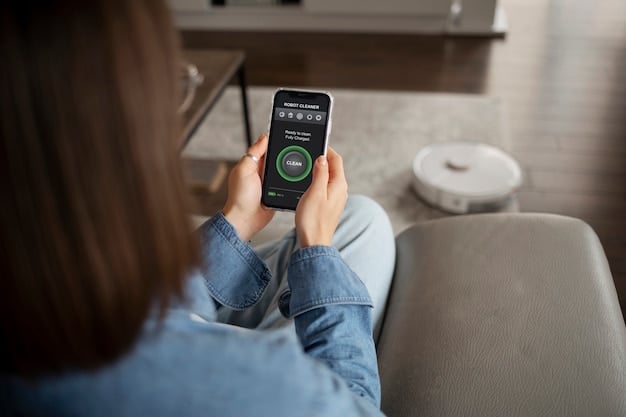
Once you’ve chosen the perfect smart home air purifier, the next step is to set it up and start enjoying cleaner air.
Most smart air purifiers are relatively easy to set up, but here are some tips to ensure a smooth experience.
Initial Setup and App Configuration
Start by downloading the manufacturer’s app and creating an account. Follow the instructions in the app to connect the purifier to your home’s Wi-Fi network. Once connected, you can customize settings, set schedules, and monitor air quality.
Placement and Usage Tips
- Place the purifier in a central location where it can effectively circulate air throughout the room.
- Avoid placing the purifier near obstructions that could block airflow.
- Run the purifier continuously for optimal air quality.
- Clean the exterior of the purifier regularly to prevent dust buildup.
Troubleshooting Common Issues
Like any electronic device, smart home air purifiers can sometimes experience issues. Here are some common troubleshooting tips.
From simple fixes to some more complex ones requiring tech expertise, keep reading to discover more.
Connectivity Problems
If your purifier is having trouble connecting to Wi-Fi, make sure your network is working properly. Try restarting your router and the purifier. If the problem persists, consult the manufacturer’s support website.
Filter Replacement and Maintenance Alerts
Most smart air purifiers will alert you when it’s time to replace the filter. Be sure to replace the filter promptly to maintain optimal performance. Clean the pre-filter regularly to extend the life of the HEPA and carbon filters.
Performance Issues
If you notice a decline in air purification performance, check the filter and ensure that it is clean and properly installed. Also check whether the air vents are blocked.
By following these troubleshooting tips, you can keep your smart home air purifier running smoothly and efficiently.
The Future of Smart Air Purification
The future of smart home air purifiers looks promising. As technology continues to advance, we can expect even more sophisticated features and capabilities.
Innovation in this field will result in newer and more efficient purifiers at lower costs.
Advancements in Sensor Technology
Future air purifiers may incorporate advanced sensors that can detect a wider range of pollutants, including viruses and bacteria. This will enable more targeted and effective air purification.
Integration with Smart Home Ecosystems
Expect even tighter integration with smart home ecosystems, allowing your air purifier to work seamlessly with other devices like smart thermostats and ventilation systems.
Improved Energy Efficiency
Manufacturers are constantly working to improve the energy efficiency of air purifiers. Future models will likely consume less power while delivering even better performance.
| Key Aspect | Brief Description |
|---|---|
| 💨 Air Quality Monitoring | Real-time tracking of pollutants via connected devices. |
| 📱 Remote Control | Adjust settings and monitor from anywhere using a smartphone. |
| 🤖 Automated Adjustments | Purifier adjusts settings based on detected air quality. |
| 🛡️ Filtration Systems | Multi-stage filters capture various pollutants. |
Frequently Asked Questions
Smart air purifiers offer remote control, real-time monitoring, and automated adjustments. These features provide greater convenience and control over your indoor air quality, thus improving efficiency.
Smart air purifiers use sensors to detect pollutants such as particulate matter (PM2.5), VOCs, and allergens in real-time. The data is then transmitted to a smartphone app for your view.
Yes, many smart air purifiers are compatible with voice assistants like Amazon Alexa and Google Assistant. Thus, this feature allows you to control the purifier hands-free, so you can command more efficiently.
Filter replacement frequency varies depending on the model and usage. However, most manufacturers recommend replacing filters every 3-6 months. Usually, the manufacturers have guidelines available online.
Yes, many smart air purifiers are designed to be energy efficient. They use features like automatic mode to adjust fan speed based on air quality, which helps conserve energy.
Conclusion
Investing in a smart home air purifier is an important step toward creating a healthier and more comfortable living environment. With their advanced features and smart connectivity, these devices offer unparalleled control over indoor air quality and also enhance your home experience.
